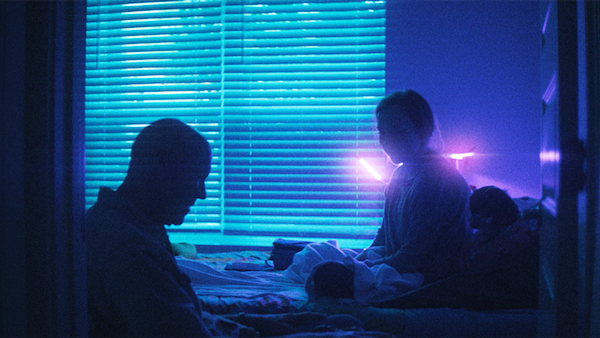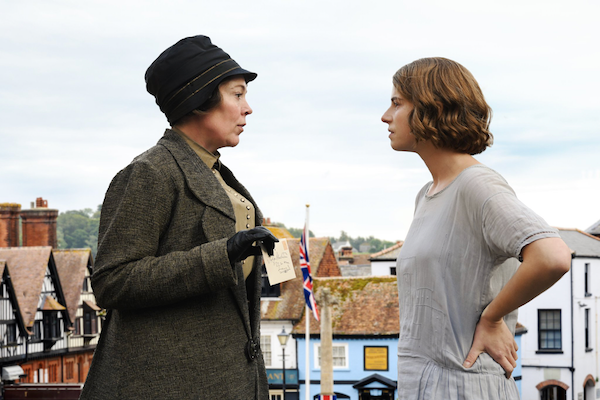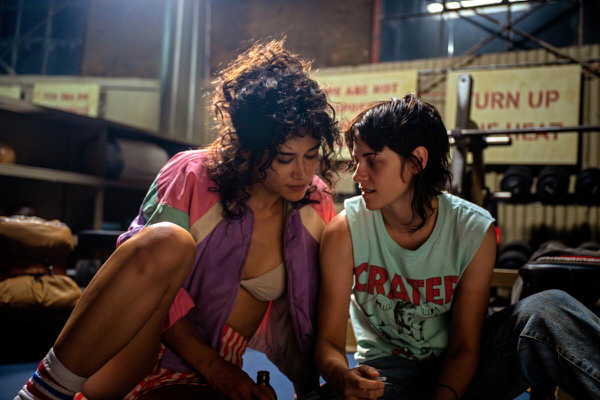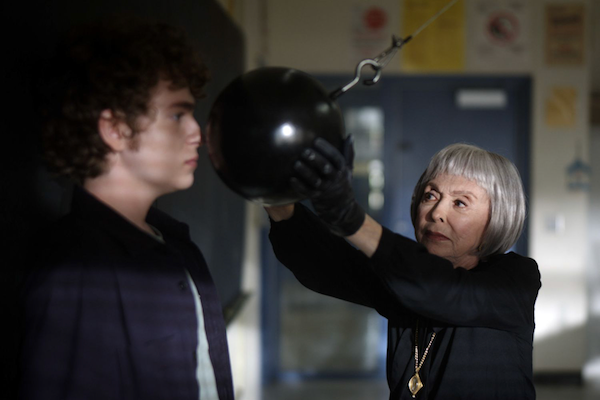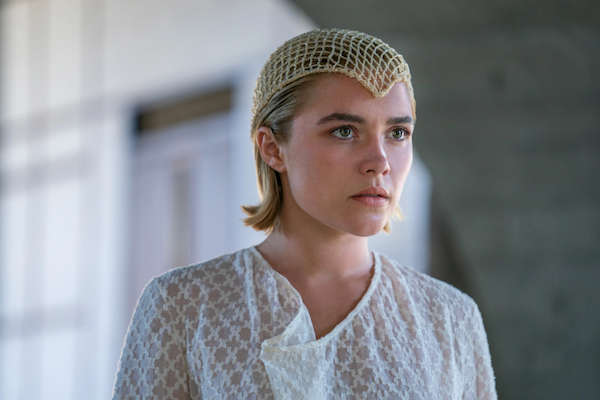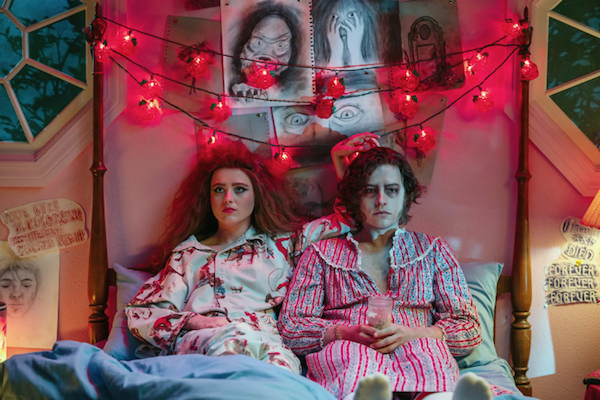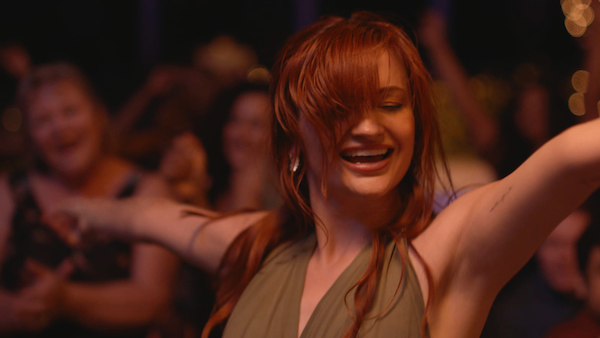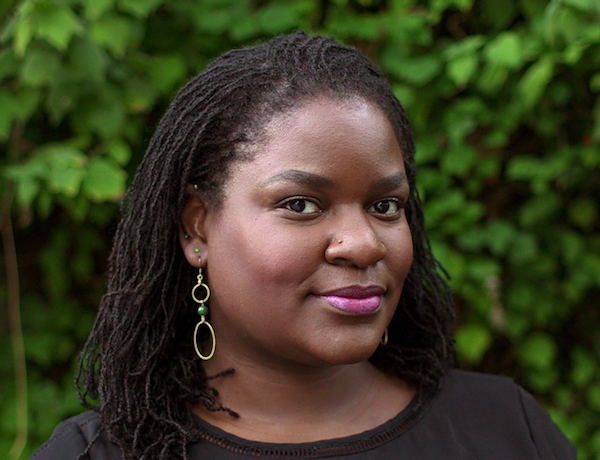
Interview by Greg Carlson
Writer-director J.D. Shields, whose television credits include work on “Emperor of Ocean Park” and “The Company You Keep,” has also written for DreamWorks TV Animation, Wondery, and Sony Pictures Entertainment. J.D. has also participated in the Disney Writing Program, the HBOAccess Writing Program, Film Independent’s Project Involve and the American Film Institute’s Directing Workshop for Women.
Her BAFTA-qualified short film “Blue Hour” screens as part of the evening “Best in Fest” showcase that closes the 2024 Fargo Film Festival on Saturday, March 23. Shields will attend the festival and participate in a short conversation following “Blue Hour.”
Tickets are available at the Fargo Theatre box office.
Greg Carlson: Was your family into watching movies when you were growing up in Atlanta?
J.D. Shields: I would say my family was into movies a normal amount.
GC: What was the first movie you saw in a theater?
JDS: The first movie I saw in a theater was “The Little Mermaid.” I’m aging myself!
GC: I was in high school and working at a movie theater when “The Little Mermaid” came out in 1989. By the time it ended its theatrical run, I knew every word by heart. Did you have any special movies on VHS at home?
JDS: I don’t really remember this, but my parents told me that I was completely obsessed with Tim Burton’s “Batman” and I would come home and watch it every day after school. I can’t believe that. To this day, it’s my favorite “Batman” movie. Apparently, I quoted it a lot.
GC: I still quote it. As a young person, what did you find appealing about it?
JDS: I have no clue. But I definitely think that Jack Nicholson has my favorite Joker look. No offense to Heath Ledger, but I think Nicholson is the best Joker.
GC: And Burton’s “Batman” universe looks so good.
JDS: It really does. The production design, like that whole kind of Art Deco style. I guess the main reason I loved “Batman” as a kid is because it was just what we had on VHS. When I got older, “Forrest Gump” became one of my favorite films. I just love how sentimental it is.
GC: Were you already in love with the movies then?
JDS: I would say that really falling in love with movies came later in life. But I always loved stories. And I think I knew I always wanted to be an artist in some capacity. But it took a while to find my way to filmmaking.
People like yourself, who came to a love of film so early in life and memorized every shot in sequences by Spielberg, gave me a lot of insecurity when I first went to film school. Initially, I was like, “What’s a close-up?”
GC: As an undergrad, you studied English and theatre at Vanderbilt.
JDS: I thought I wanted to be a playwright, but then I realized how hard it is to make a living at that. I ended up doing a lot of dramaturgy internships and they weren’t really fulfilling. Looking back and knowing what I know now, I realized that I was really watching the artistic director and recognizing that I had different and better ideas in my mind.
GC: I think a lot of filmmakers re-stage and re-imagine scenes when they watch movies.
JDS: Yes, I was directing their production in my head before I had the confidence to do it myself. I would look at a choice and imagine my own different choice. But I would also think, “But I don’t have any training in that. How would I know how to direct?”
I knew that I wanted to write and go to a graduate program, but I wasn’t actually writing. I got to a point where I was just so desperate to get out of Atlanta after graduation that I decided to apply to film school. I knew that I could write short scripts, even though I never had a film studies class.
GC: And there are so many resources to learn about basic moviemaking.
JDS: Definitely. I taught myself enough before film school by finding books. I got a Netflix DVD plan. I took an editing class at the public access station. And then, somehow, I got myself into film school. So even though my formal film education journey started very late, I eventually fell in love with filmmaking specifically – not just storytelling.
GC: Was there a special movie that did it?
JDS: When I watched Steve McQueen’s “Hunger,” something kind of clicked for me. It went from stories on the page to a desire to tell cinematic stories. Before I saw that movie I felt that storytelling as, say, a puppeteer would be just as fulfilling as being a filmmaker. After “Hunger,” I felt like I really needed to work in the film medium.
GC: As an English undergrad, did you focus more on creative writing or on reading literature?
JDS: Initially, I was only taking English classes as a minor. I went to school thinking I would major in political science. I ended up being one class away from a triple major. That’s how far along into the poli-sci degree I was.
And so at first the English started as a way to just kind of keep my toes in the waters of creative things. I eventually thought I would double major and do the creative writing track, but it was always heavy on prose. There were never dramatic writing classes. Even then I knew that prose wasn’t my thing. So I switched back to the literature side.
GC: What was the special book you encountered?
JDS: It was Tom Stoppard, “The Invention of Love.” I read it in a humanities class and I had a real moment. I immediately realized that this was how I wanted to tell stories. That’s the day that I changed my major. Later on, I started reading Paula Vogel. She was the person whose work I read and thought, “Oh, I want to write like her when I grow up!”
GC: You collect books, but do you also keep movies on physical media?
JDS: I do keep a little collection, not a lot. I often wish I had a case filled with Criterion Collection releases. But I’m glad I’ve held on to what I have, especially since so many titles disappear from streaming services.
I get a number of screeners on physical media every year, even though they’ve started switching to more digital screeners. Friends, you can still send us physical media! I play DVDs on my PlayStation. I have some friends who don’t know how you would even play a DVD. They don’t have players! I wish I had a bigger collection especially now that accessibility can be uncertain. I really mourn the end of Netflix DVD because not everything is available to stream. I might start work on a new project and not be able to find something that I want to use as a reference or for research.
GC: It was the end of an era when Netflix DVD shut down. I liked how you didn’t have to send back your last disc. Mine was Andre de Toth’s “Springfield Rifle” with Gary Cooper. I am hanging on to that red envelope.
JDS: I heard that everybody got to keep their last DVDs! In film school, I had access to the library and also kept a hard drive filled with movies. There were so many titles that you couldn’t get that you still can’t get. And the promise of streaming having everything available all the time turned out too good to be true.
I don’t mean to get so dark and bleak about it, but it’s really kind of scary. The idea that we can’t access these things is frustrating.
GC: The ephemeral nature of, well, anything in the world that we make can be overwhelming. Movies have to be cared for and archived and protected and looked after if we want them to last more than one generation. I just watched the documentary “Against the Grain” that was included in Vinegar Syndrome’s “Lost Picture Show” collection and it points out just how much stuff disappears, some of it forever.
JDS: I want to start investing.
GC: Are there other filmmakers whose work you really admire?
JDS: Andrea Arnold. I feel like watching her films is inspiring. When you see a movie with a big budget that is technically polished, it can be hard on your self-esteem and your confidence. You might think, “I don’t know that I’ll ever make something that looks that good.” And then I watched “Fish Tank” – and it still looks really good – but it also feels like you can pick up a camera like Arnold. Do you know what I mean? Beautiful cranes and dollies are great, but it can be just as good with a handheld camera following somebody. I thought, “I can do that.” Arnold’s films gave me the confidence that I could make something good that didn’t have to look like a Christopher Nolan film.
I read an article where Arnold said that she’s inspired by random things that are not film-related. And I thought, “Oh, okay!”
GC: What is the movie in your collection that isn’t going anywhere?
JDS: “Eternal Sunshine of the Spotless Mind.” I need it. I love everything about that movie.
GC: Michel Gondry and Charlie Kaufman together on that movie are like a peanut butter and chocolate situation – each one makes the other better. It’s magic, for sure.
JDS: I won’t let Charlie take the happy ending away from me, because I don’t know if you’ve read or heard about earlier drafts where they just keep erasing each other.
GC: Gondry leaves us with hope, even if Clementine and Joel end up in a forever loop.
JDS: They decide to give it another try. I love that. They will keep finding their way to each other.
GC: “Blue Hour” has been so successful, appearing in dozens of film festivals and winning several awards along the way. Did you get to a lot of film festivals in person?
JDS: I did get to quite a few. Our world premiere was at the Brooklyn Film Festival, so I traveled to New York for that. I went to Montana. I went to San Jose and a few others in California. I got to Savannah and Pittsburgh with it, which was nice.
My last ones are Fargo, Cleveland, and Miami, and then I’m going to hunker down for a while. These are champagne problems, for sure, but there was a stretch where I was doing two festivals a weekend or two festivals in a four day period, which can lead to burnout.
GC: After having “Blue Hour” in your life for so long, what did you learn when you were on the road with it?
JDS: The first time someone asked me about my still photography references for the film and I realized I hadn’t even thought about those in so long. I’ve also had a couple people who didn’t realize what happened in the pivotal moment, which I thought was interesting.
GC: Tell me a little bit about how you developed “Blue Hour” in the AFI Directing Workshop for Women in collaboration with Women in Film.
JDS: I wrote what became “Blue Hour” years earlier, when I was a screenwriting fellow in Project Involve. Later, in the DWW, 85 percent of the draft was unchanged and then it wasn’t until we were maybe close to casting that my producer asked me why Rene was selling a saxophone. I thought, “You’re right. She should be selling a camera.”
And once I thought about that, it just all hit me in a second. She doesn’t sell the camera. Those are our bookends. She’s finishing a roll of film before she goes to sell the camera and that’s how we open the film. And then we close the film with another self-portrait. Those are huge elements of the film. So it’s exciting and scary to think that all came so late in the process.
GC: That’s fantastic.
JDS: Even some of our favorite dialogue was written because I had to write audition sides. There wasn’t enough dialogue in the actual script for anybody to audition with. And so the lines, “What’s his name? He doesn’t have a name” – all of that I just wrote for the audition. And then I thought, “You’re not going to let all that slip away in the audition. That’s got to be in the movie.”
GC: As a writer who is now making films, do you write everything with a plan to direct it yourself?
JDS: This is a great question because I definitely am not writing shorts for other people to make and now I don’t really want to write features for other people to make either! I mean, it’s one thing if it’s an assignment and you’re hired by a studio to write a feature. That’s a job. But for my own work, I try to write things that I feel like somebody will give me money to make rather than something that would only be made if I sold it.
Sometimes, I’d rather just keep it and never make a cent off of it even if it never gets made. At least it’s mine. I do have a passion project but I don’t know if anybody will give me the money to make it. It feels a little too expensive at this juncture in my career. But I don’t think I would sell it because I would be sad if somebody else made it. I don’t know. Maybe I would be happy to see it get made and I’d be OK with it.
GC: You can do anything on the page. It only gets expensive when you are shooting it.
JDS: That’s a great point. Because when you’re a writer, you should have an imagination as big as the universe and beyond.
